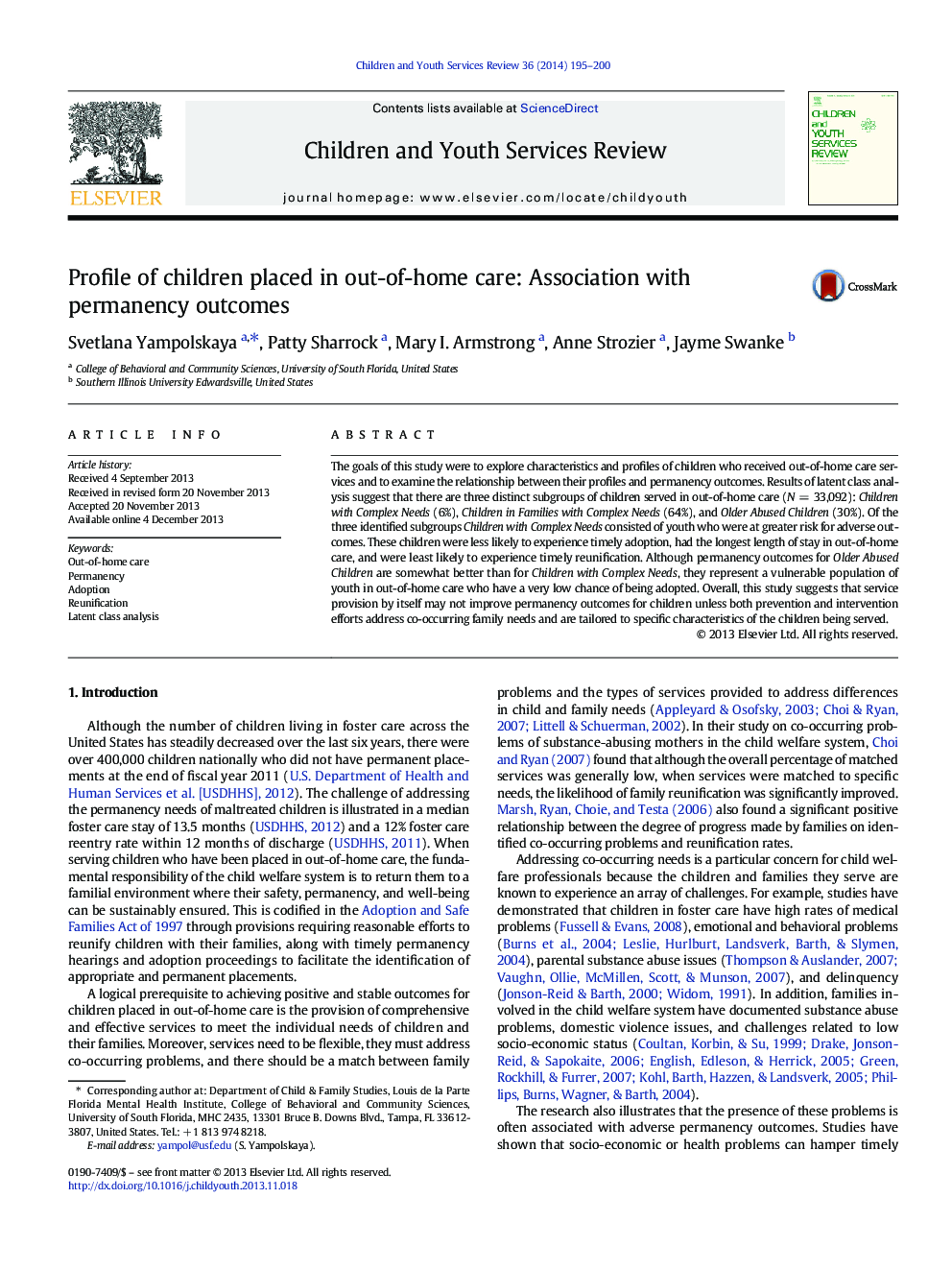| Article ID | Journal | Published Year | Pages | File Type |
|---|---|---|---|---|
| 346122 | Children and Youth Services Review | 2014 | 6 Pages |
•Three distinct subgroups of children served in out-of-home care were identified.•Children with Complex Needs were at greater risk of adverse outcomes.•Findings suggest interventions should be tailored to address co-occurring needs.
The goals of this study were to explore characteristics and profiles of children who received out-of-home care services and to examine the relationship between their profiles and permanency outcomes. Results of latent class analysis suggest that there are three distinct subgroups of children served in out-of-home care (N = 33,092): Children with Complex Needs (6%), Children in Families with Complex Needs (64%), and Older Abused Children (30%). Of the three identified subgroups Children with Complex Needs consisted of youth who were at greater risk for adverse outcomes. These children were less likely to experience timely adoption, had the longest length of stay in out-of-home care, and were least likely to experience timely reunification. Although permanency outcomes for Older Abused Children are somewhat better than for Children with Complex Needs, they represent a vulnerable population of youth in out-of-home care who have a very low chance of being adopted. Overall, this study suggests that service provision by itself may not improve permanency outcomes for children unless both prevention and intervention efforts address co-occurring family needs and are tailored to specific characteristics of the children being served.
